Dendritics D500 Weighing Pan - Evaluations #2 |
|
|
![]()
|
(March 1996) In the development process for the D500 weighing pan many many designs were considered and discarded. This gives a feeling for that process. |
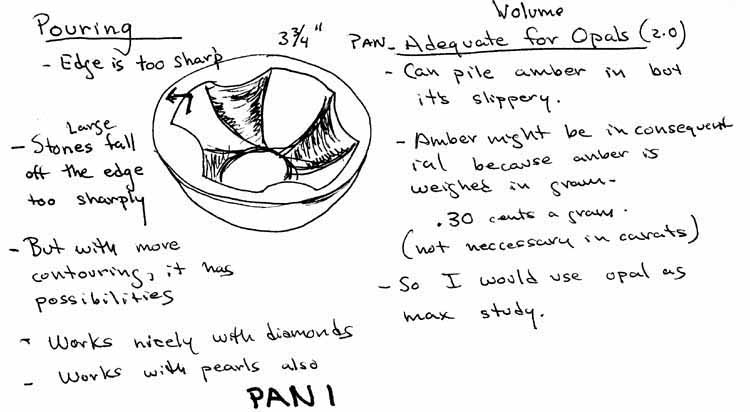
PAN 1/ The inside contouring works nicely to channel diamonds and pearls (small to medium) stones. However the contouring needs to be improved for channeling larger stones. The edge as it stands, is too sharp for pouring. The stones need to be tipped and spilled out rather than poured out. The does not contain well 500c of amber.
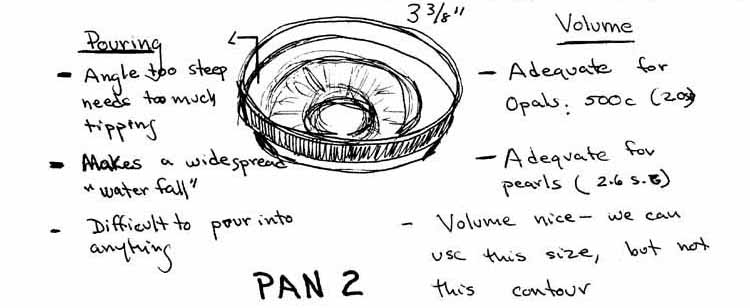
PAN 2/ This design does not work well for pouring out stones. The stones must be tipped out of the pan. They tend to fall out uncontrollably. The problem is the sharp inside corner and steep vertical rise at the edge. The volume is minimally adequate for 500 ct of amber. We can use this size pan but not this contour. This is the smallest volume that is usable.
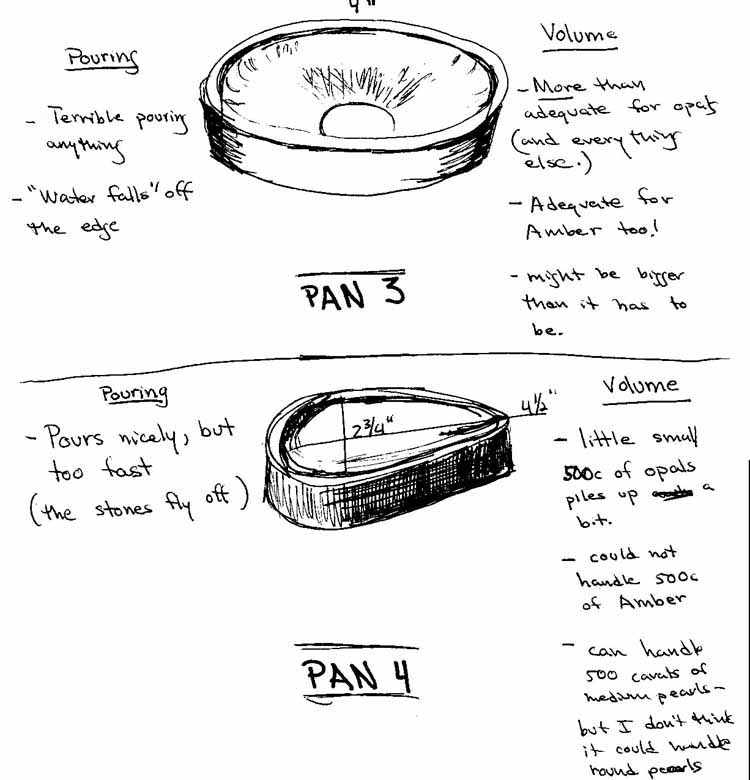
PAN 3/ Again the contouring does not work for controlled pouring. The bottom region does center stones well This volume is more than adequate for 500 ct of amber. This is the largest volume and pan size that I would want to see used for this scale.
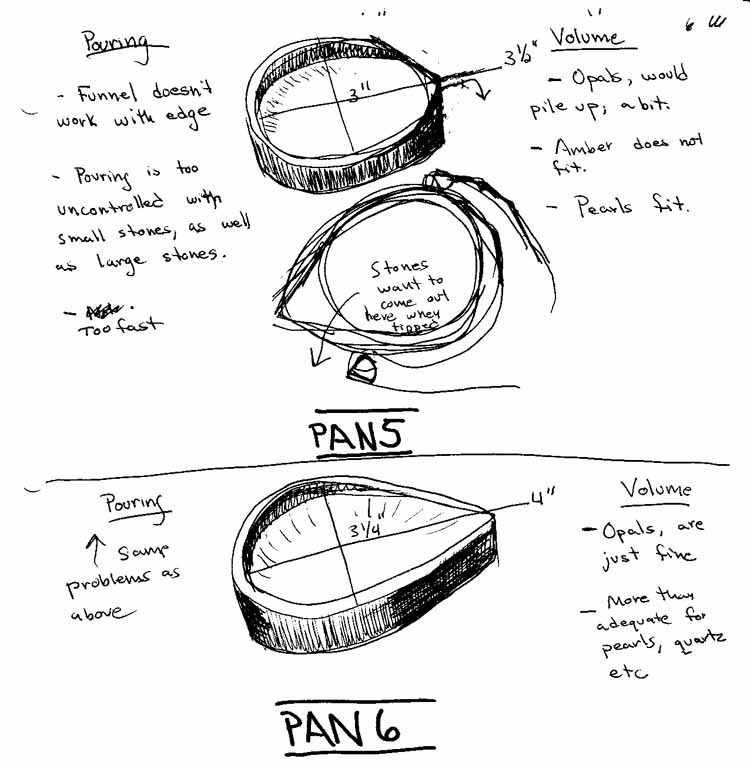
PAN 5/ The contouring does not work. The spout does not channel the stones. Again, the stones pour out uncontrollably. Itís too steep at edges. It tends not to center the stones but to locate them at the low point, off center. The volume is inadequate for 500 ct of amber. It is O.K. for 500 ct. of opal. I do like the shape.
PAN 6/ The pouring action fails as it does in PAN 5. And, because of the way it is shaped and fits into my hand, I find myself pouring from a point 45 degree is from the tip. This is not an optimal spot for a flow of stones. The volume is adequate for 500 ct of opals but not adequate for 500 ct of amber. I like the rounder PAN 5 shape.
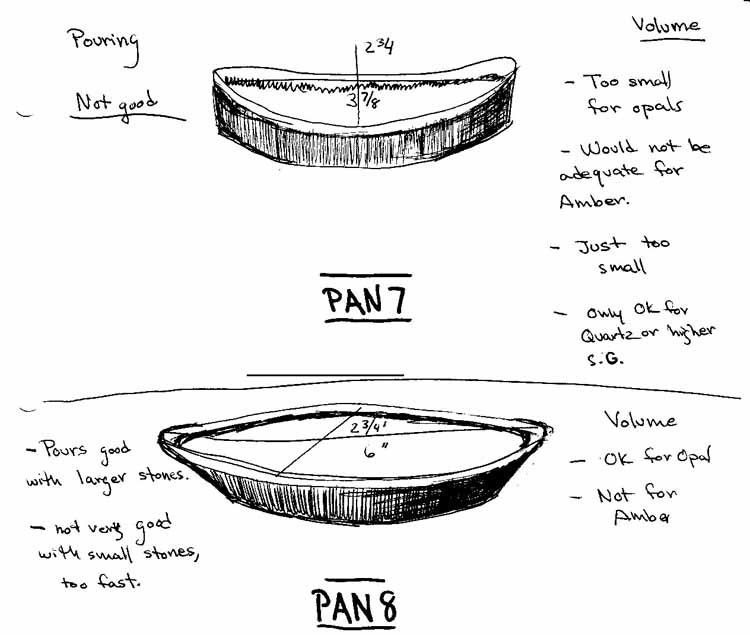
PAN 4/ PAN 7/ PAN 8/ PAN 9/ PAN 10/ PAN 13 (from scale A5) can all be eliminated because of their shapes. It was decided that their shapes would put too much of a demand on the technology to compensate for off center loading errors.
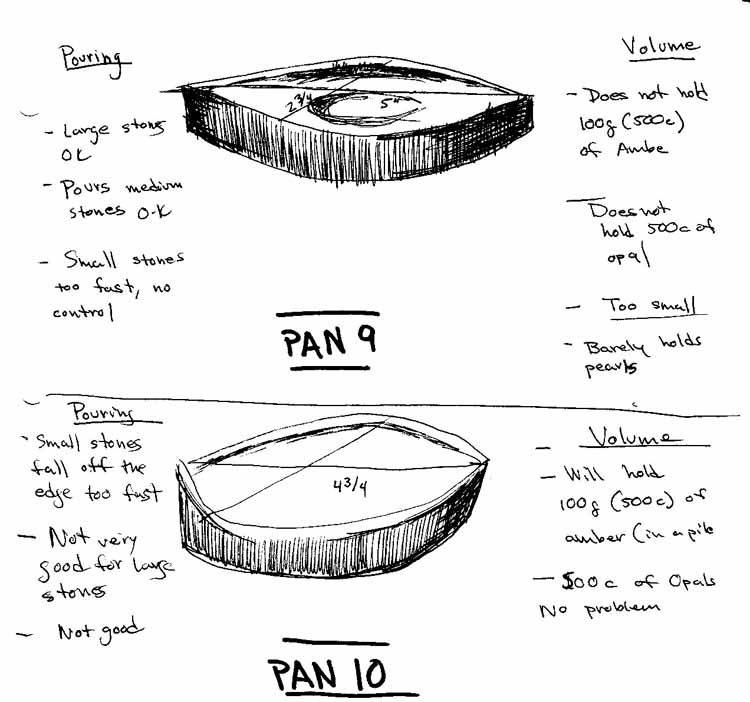
PAN 9/ Does not have good pouring action. Again, I find myself pouring from a point about 30 degrees from the tip and the flow of stones is very broad in cross section, giving little control as to where they land. The volume is adequate for 500 ct of amber.
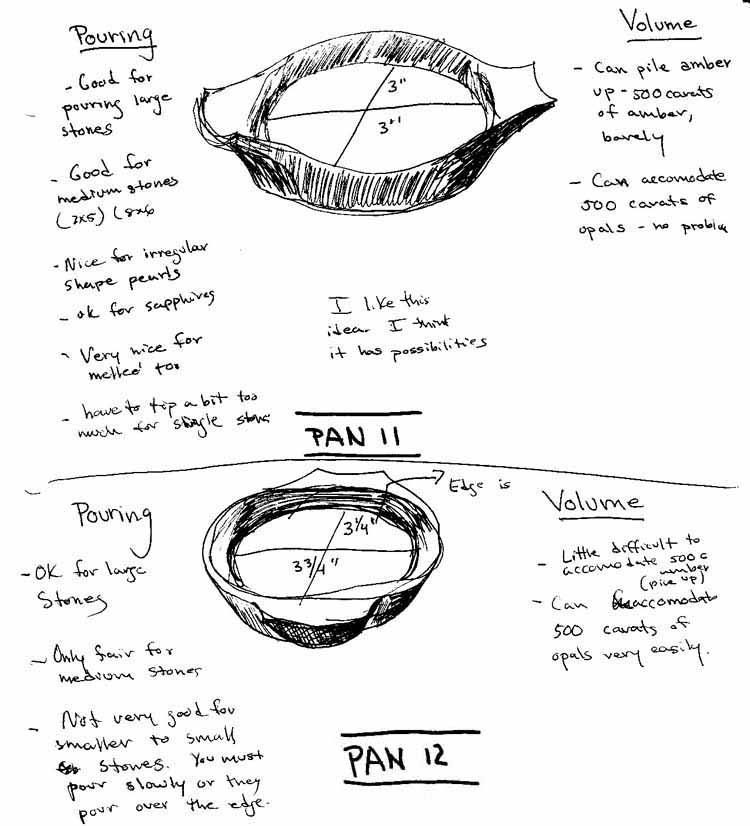
PAN 11/ Seems to have some possibility for control and pouring for large and small stones. Single stones have to be tipped all the way out.
JB SAYS "Some problems, however: the flat bottom does not center stones, the sharp bottom corner hold small stones. I find it difficult to pour from the spout , as thumb, forefinger holding and pivoting process give me an uneasy feeling in terms of my grip on the pan. I find myself pouring from a point about 40 degrees from the tip."
The pan can contain 500 ct of amber with a bit of a pile up. I think this pan also has possibilities. I like the hand/spout idea. It can be used from both sides of the scale.
PAN 12/ Itís a little too tight to contain 500 ct of amber. It does not have the good pouring action of PAN 11. But this just might be a matter of contouring.
JB SAYS "Except for the last small stone or two, if I am pouring from a point 90 degrees from the handles, I find that it pours out quite well, However, it does not fit my hand well- it is unclear how best to hold it. Also it exhibits a new and interesting problem. Since the bottom is so flat, when small stones are poured into the pan, they bounce uncontrollably, as opposed to the pans with angled bottoms that deflect the stones until their energy is lost. Also, the flat bottom of course will not center stones for weighing.
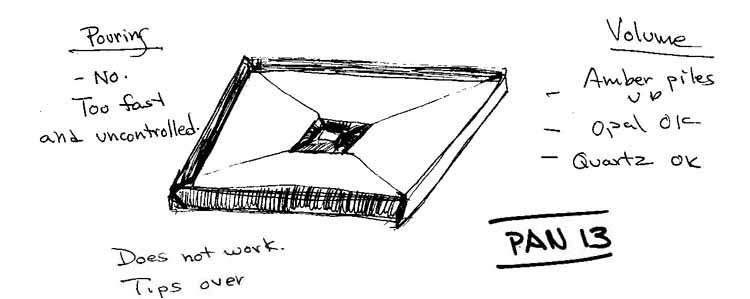
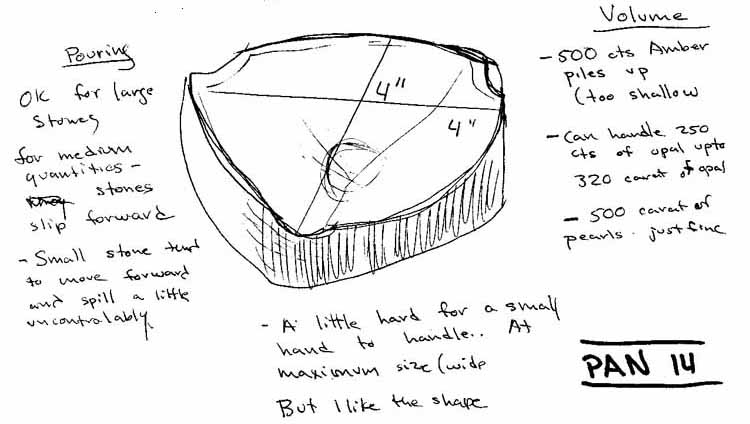
PAN 14/ Its contour is good for large stones. Medium and small stones slip forward too fast and spill out uncontrollably. The pan is too shallow to accommodate 500 ct of amber . But I like the shape.
JB SAYS " As it stands, it is uncomfortable in my hand. I cannot seem to find a position to hold or pour which gives me a feeling of control. The pouring itself seems quite good except for the 500 ct of pearls. They are insufficiently channeled and flow over the edges of the pan to form a broad and uncontrolled "river" of stones.
![]()
Images and webpage designs © 2001-2026 your webmaster, jb and Dendritics Inc. [-]